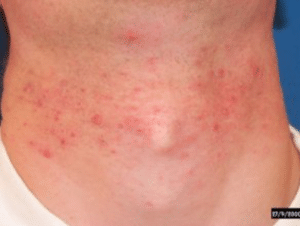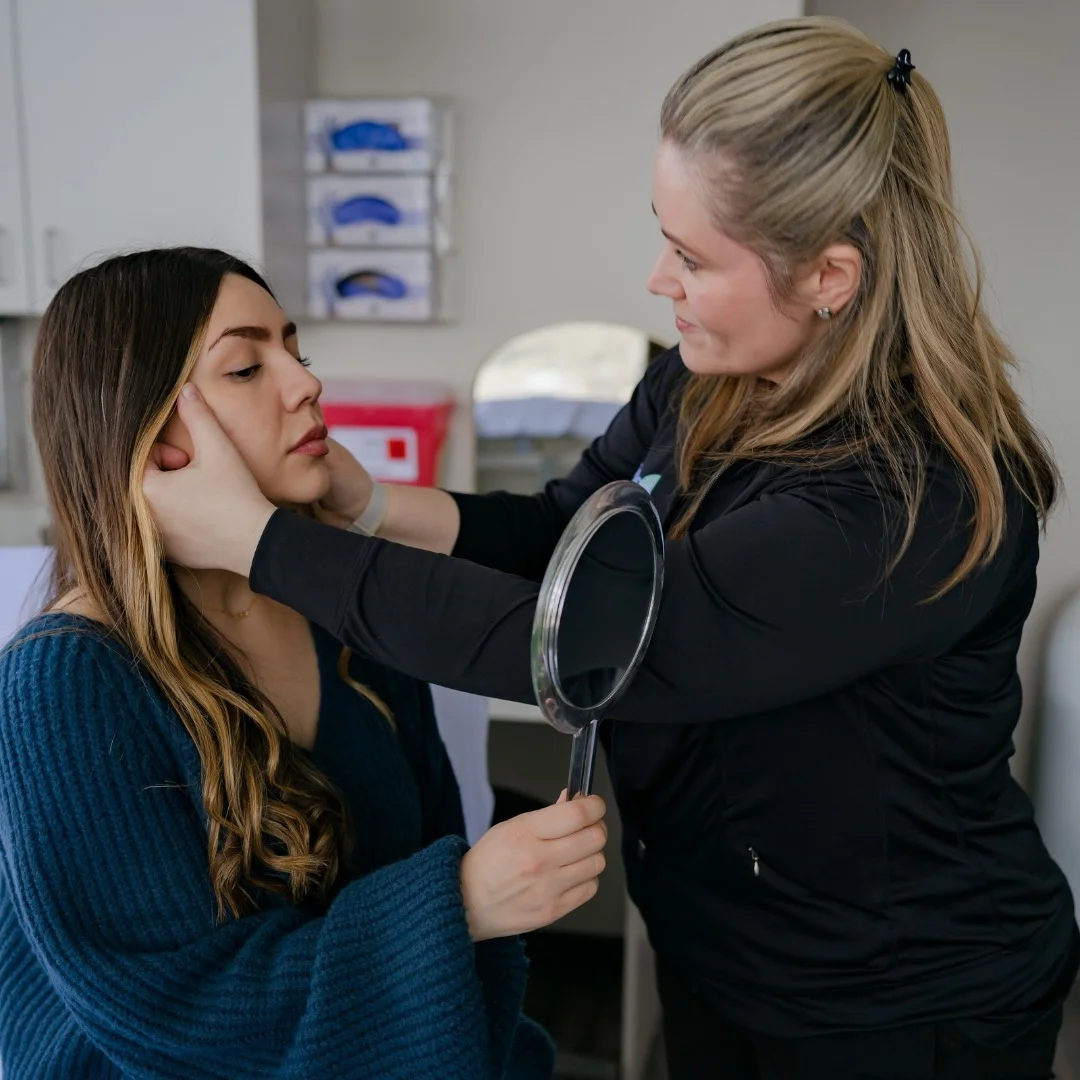“Shaving rash” and “razor bumps” are the common names given to pseudofolliculitis barbae, a red, bumpy rash caused by shaving, commonly involving the face and neck of men and skin fold areas and legs of women. African American males and those with curly hair are most susceptible. The bumps are caused by an inflammatory reaction to hairs that curve into the skin. Sometimes a bacterial staph infection can accompany pseudofolliculitis, and it appears as tender pustules (white heads). Improper shaving techniques (including pre and post-shave routines) are often to blame.
How to minimize pseudofolliculitis barbae (“razor bumps”)
Pre-shave preparation:
- Prepping the skin is critical to minimizing trauma to the skin and hair follicles.
- It is best to shave AFTER showering. This will allow for moistening of the hairs and opening of the pores which encourages a smooth shave.
- Use a gentle cleanser with a wash cloth in circular motion – this can help release embedded hairs. As an alternative to a wash cloth consider use of a Buf-Puf Facial Sponge. This helps to lift embedded hairs prior to shaving.
- If there are pustules use a benzoyl peroxide 10% cleanser (AboutSkin BP Wash) in place of gentle cleanser.
- Hydration with a shaving cream/gel is VERY important to soften the hairs and allow a smooth glide of the blade across the skin with less cutting force, less snagging of hairs, and less trauma to follicles. By doing this you are more likely to cut hair perpendicularly, not tangentially – this means less sharp pointy hairs to poke your skin. Look for an alcohol free product like (AboutSkin shaving cream).
During shave:
- Single or multi-blade razor?? Recent studies show multi-blade razors are equally effective as single blade razors in reducing razor bumps as long as proper pre and post shaving regimens were followed.
- Blade options:
- “Bump Fighter” blade is preferred by some patients
- Single blade razor – soak in antiseptic solution between shaves.
- Multi-blade razor (only if following pre and post shaving instructions)
- Increased shave frequency can help according to a recent study – a daily shave can actually decrease irritation over time.
- Shave in direction of growth
- Don’t stretch or pull the skin when shaving
Post-shave:
- Use a nice, hydrating aftershave balm containing one or all of the following ingredients, but not alcohol. Look for ingredients like glycerin, niacinamide, shea, aloe vera, witch hazel – these products help to restore skin barrier and minimize irritation. Avoid aftershave splashes that frequently contain alcohol.


